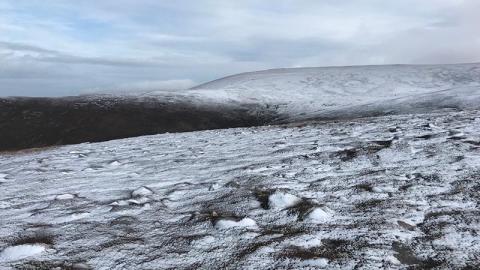“When you can’t visit the Arctic itself, bring the Arctic to you!” . These were the words of Ph.D student Laura Turner from the University of Nottingham as she reached the top of a snowy Creag Follais in late November 2020.
Laura was with University of Edinburgh student Elise Gallois. Both were due to carry out fieldwork in the Arctic. Laura had hoped to visit Western Siberia, while Elise should have conducted her research in the Arctic Yukon. Unfortunately the COVID-19 pandemic forced them to change their plans.
Fortunately they could turn to ECN and our Cairngorms site, which is a part of the circumarctic INTERACT network of field bases in northern Europe, Russia, US, Canada, and Greenland.
Laura and Elise's story demonstrates the importance of having established monitoring sites such as ECN available to researchers when needed
Laura and Elise are collaborating on a project to investigate root traits and below-ground phenology over time in tundra environments. This summer was meant to be step one of their two-year experiment: installing cores filled with fresh milled peat, ready to leave over the frigid Arctic winter and extract the following summer. Their aim is to learn more about how roots grow relative to above ground vegetation, and also how root traits vary according to soil moisture, precipitation and microclimate.
Unable to fly to exotic arctic locations, they were, however, thrilled to discover they could run a pilot study of their protocol in the Cairngorms. The site is sub-arctic in nature and as close as they could get to the tundra in the UK.
As an established research site, ECN Cairngorms also made an ideal location for their research.
Laura and Elise visited the hill twice over the course of a weekend. Despite the horizontal snow (which added an appropriate polar ambience) they enjoyed great conditions, even spotting a red squirrel and two golden eagles.
Laura and Elise's story demonstrates the importance of having established monitoring sites such as ECN available to researchers when needed. We are delighted to have been able to support their research and wish them all the best with their research.
Further information
[Photo: Elise Gallois]
